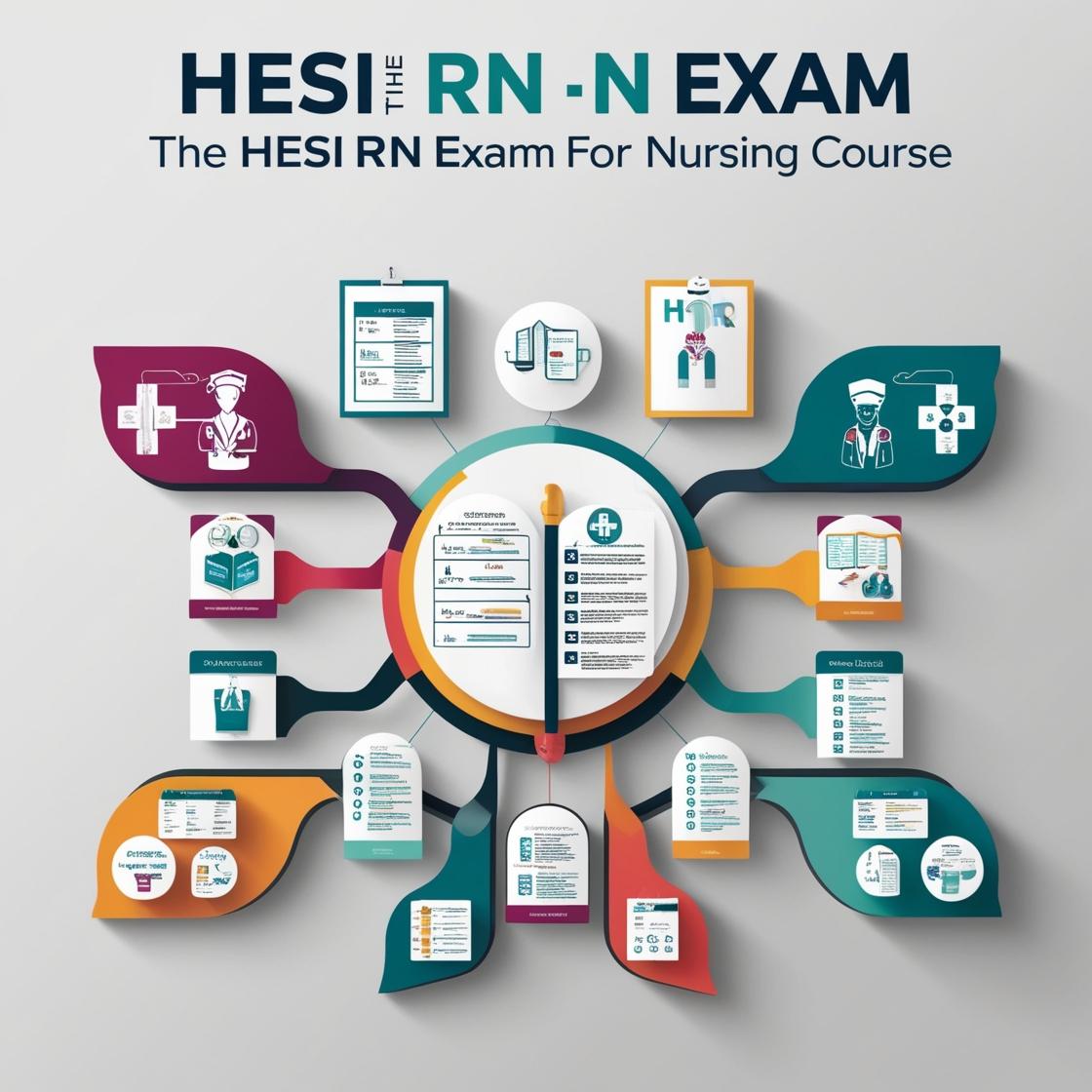HESI RN
HESI 799 RN Exit Exam Capstone
1. A client presents to the emergency department with a severe exacerbation of asthma. The nurse notes that the client is using accessory muscles to breathe and has an oxygen saturation of 86%. Which intervention should the nurse implement first?
- A. Place the client in a high-Fowler's position
- B. Obtain a peak flow reading
- C. Administer a bronchodilator
- D. Administer oxygen therapy
Correct answer: D
Rationale: The first priority in an acute asthma exacerbation is to administer oxygen to improve the client's oxygen saturation. In this scenario, the client has a low oxygen saturation level of 86%, indicating hypoxemia, which can be life-threatening. Administering oxygen therapy will help improve oxygenation and support vital organ function. Once the oxygen levels are stabilized, further interventions such as bronchodilators can be implemented. Placing the client in a high-Fowler's position may also be beneficial, but ensuring adequate oxygenation takes precedence in this critical situation. Obtaining a peak flow reading is important for asthma management but is not the first intervention needed in a client with severe hypoxemia.
2. A client with Parkinson's disease is prescribed levodopa/carbidopa. The nurse instructs the client to take the medication with meals. Which rationale should the nurse provide for taking the medication with food?
- A. It enhances the effectiveness of the medication
- B. It helps to improve absorption
- C. It prevents orthostatic hypotension
- D. It reduces gastrointestinal upset
Correct answer: D
Rationale: The correct answer is D: 'It reduces gastrointestinal upset.' Levodopa/carbidopa can cause nausea and other gastrointestinal side effects. Taking the medication with food can help reduce these side effects and improve the client's comfort. Choices A, B, and C are incorrect because taking the medication with food does not primarily enhance effectiveness, improve absorption, or prevent orthostatic hypotension. The main reason for advising to take the medication with meals is to minimize gastrointestinal upset.
3. Which information is a priority for the RN to reinforce to an older client after intravenous pyelography?
- A. Eat a light diet for the remainder of the day
- B. Rest for the next 24 hours as the preparation and the test are tiring
- C. Drink at least 1 8-ounce glass of fluid every waking hour for the next 2 days
- D. Measure the urine output for the next day and promptly notify the healthcare provider if it decreases
Correct answer: D
Rationale: After intravenous pyelography, it is crucial for the client to measure urine output in the next day to monitor for any potential complications, such as kidney issues. Promptly notifying the healthcare provider in case of decreased urine output is essential for timely intervention. While rest and hydration are important post-procedure, monitoring urine output takes precedence due to its direct correlation with potential complications.
4. The nurse prepares to teach clients about blood glucose monitoring. When should clients always check glucose, regardless of age or type of diabetes?
- A. Before going to bed.
- B. After meals.
- C. During acute illness.
- D. Prior to exercising.
Correct answer: C
Rationale: The correct answer is C: During acute illness. Checking blood glucose during acute illness is crucial as stress can elevate glucose levels. This monitoring is essential regardless of the client's age or the type of diabetes they have. Checking before going to bed (choice A) may be important for some individuals, but it's not as universally necessary as during acute illness. Checking after meals (choice B) and prior to exercising (choice D) are important times for monitoring blood glucose, but they are not as universally applicable as during acute illness.
5. What breakfast selection indicates appropriate dietary management for osteoporosis?
- A. Pancakes with syrup and orange juice
- B. Bagel with jelly and skim milk
- C. Eggs with sausage and whole milk
- D. French toast with butter and syrup
Correct answer: B
Rationale: The correct answer is B. A bagel with jelly and skim milk is a calcium-rich and low-fat option that aligns with the dietary recommendations for managing osteoporosis. Osteoporosis is a condition characterized by weak and brittle bones, so it is essential to consume an adequate amount of calcium while avoiding excess fat intake. Choices A, C, and D are not ideal for osteoporosis management as they either lack sufficient calcium, contain high fat content, or both.
Similar Questions

Access More Features
HESI RN Basic
$89/ 30 days
- 50,000 Questions with answers
- All HESI courses Coverage
- 30 days access @ $89
HESI RN Premium
$149.99/ 90 days
- 50,000 Questions with answers
- All HESI courses Coverage
- 30 days access @ $149.99
